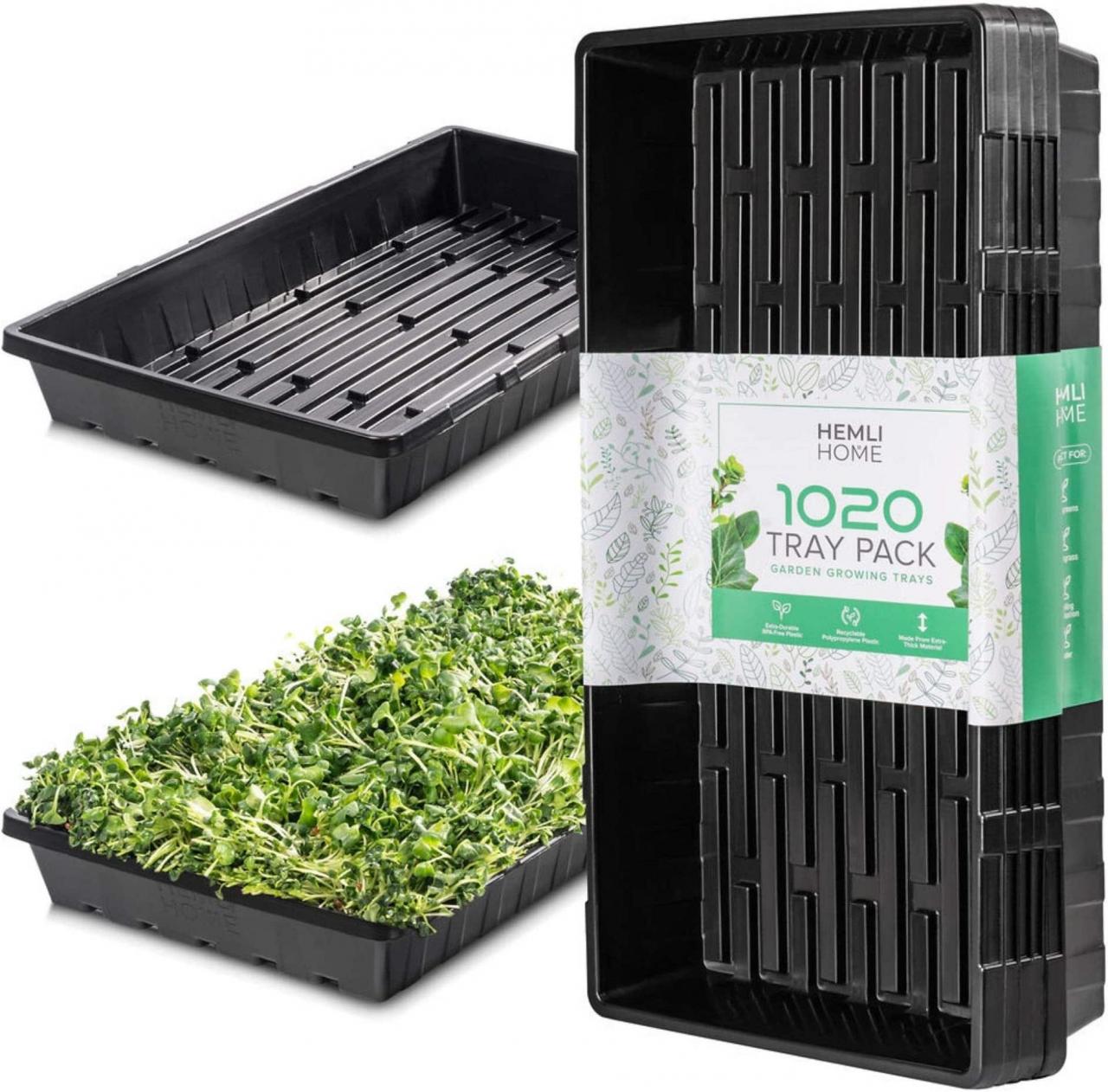When it comes to growing microgreens, the choice of seed starting trays can greatly impact the success and efficiency of your operation. One popular option is the 1020 seed starting tray, which offers a range of benefits and potential drawbacks. Let’s explore the pros and cons of using these trays for microgreens.

Pros of Using 1020 Seed Starting Trays for Microgreens
Durability: 1020 trays are designed to be highly durable, with extra-thick, BPA-free, food-safe, and recyclable plastic that resists cracking and breaking. This allows for repeated use over multiple growing seasons.
Stackability: The trays are perfectly stackable for easy storage during the off-season, making them convenient for growers with limited space.
Versatility: These trays are suitable for a wide range of applications, including seedling starting, microgreens growing, trimming, succulent propagation, hydroponics, and wheatgrass cultivation.
Shallow Depth: The shallow depth of 1020 trays (around 1.25-2.25 inches) makes it easier to cut microgreens closer to the base of the plant, optimizing yields and presentation.
Cons of Using 1020 Seed Starting Trays for Microgreens
Drainage Holes: Some 1020 trays may not come with pre-drilled drainage holes, which can be essential for proper watering and preventing issues like damping off. Growers may need to drill their own holes.
Soil Quantity: The shallow depth of the trays means that less soil is needed for sowing microgreen seeds, which may be a consideration for growers with specific soil requirements.
Shipping Damage: While the trays are durable, they can potentially be damaged during shipping. Reputable sellers often offer replacement guarantees or money-back policies to address this issue.